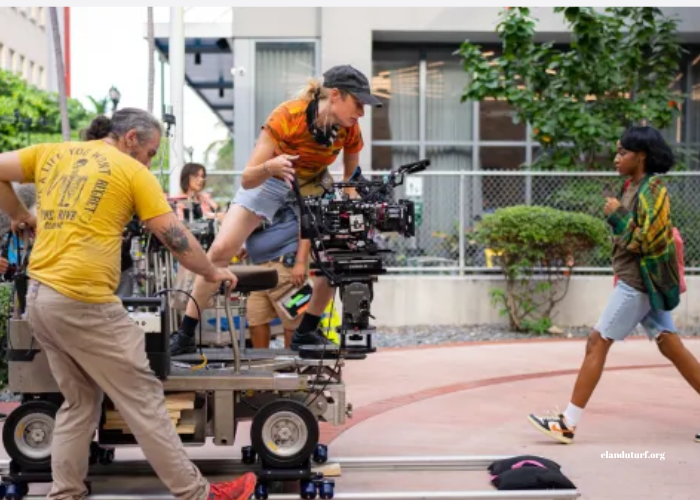Independent cinema has long served as a vital breeding ground for creativity, originality, and diverse storytelling. In an industry often dominated by major studios and formulaic blockbusters, independent filmmakers have carved out a niche where they can explore unconventional narratives, tackle complex themes, and present unique cultural perspectives. This article delves into the landscape of independent cinema today, highlighting its significance, key figures, and the distinctive voices that are shaping the future of film.
The Essence of Independent Cinema
Independent cinema, often referred to as “indie film,” encompasses a wide range of productions that are made outside the traditional studio system. These films are typically characterized by lower budgets, artistic freedom, and a focus on unique storytelling. Independent filmmakers often take risks that mainstream studios might shy away from, leading to innovative narratives that challenge societal norms and expectations.
One of the hallmarks of independent cinema is its ability to spotlight underrepresented voices. These filmmakers often come from diverse backgrounds, bringing personal experiences and cultural nuances to their work. In a world where representation matters, indie films have become a crucial platform for marginalized communities to tell their stories authentically.
Historical Context
The roots of independent cinema can be traced back to the early 20th century, with filmmakers like Charlie Chaplin and D.W. Griffith experimenting outside the confines of established studio systems. However, it wasn’t until the 1960s and 1970s that indie cinema truly began to flourish. The rise of the American New Wave, with directors like Martin Scorsese, Francis Ford Coppola, and John Cassavetes, paved the way for a generation of filmmakers who embraced artistic freedom and explored complex human emotions.
The success of films like Easy Rider (1969) and The Godfather (1972) demonstrated that independent films could not only achieve critical acclaim but also box office success. This era marked the beginning of a movement that challenged the status quo of Hollywood filmmaking.
The Current Landscape of Independent Cinema
In recent years, independent cinema has experienced a renaissance, fueled by technological advancements and changes in distribution methods. The advent of digital filmmaking has made it easier for filmmakers to create and distribute their work without the financial backing of major studios. Platforms like Vimeo, YouTube, and streaming services such as Netflix and Amazon Prime have opened new avenues for indie filmmakers to reach wider audiences.
Moreover, film festivals have become essential in promoting independent films. Festivals like Sundance, Cannes, and Toronto International Film Festival have launched the careers of many indie filmmakers, providing them with a platform to showcase their work to industry professionals and audiences alike. These festivals not only highlight the diversity of stories being told but also create opportunities for networking and collaboration among filmmakers.
Unique Voices in Today’s Independent Cinema
As we explore the current landscape of independent cinema, it’s essential to recognize the diverse voices that are shaping its narrative. These filmmakers come from various backgrounds and cultural contexts, each bringing their unique perspectives to the forefront. Here are a few notable voices in independent cinema today:
Ari Aster
Ari Aster has garnered significant attention for his thought-provoking horror films, Hereditary (2018) and Midsommar (2019). Aster’s work delves into themes of grief, trauma, and familial dysfunction, presenting horror not just as a genre but as a means to explore complex human emotions. His unique approach to storytelling and cinematography has made him a standout voice in contemporary indie cinema.
Lulu Wang
Lulu Wang’s film The Farewell (2019) tells the poignant story of a Chinese-American woman navigating her family’s cultural differences surrounding illness and death. The film received critical acclaim for its authentic portrayal of cultural identity and familial bonds. Wang’s work emphasizes the importance of storytelling in preserving cultural heritage and fostering understanding among different communities.
Barry Jenkins
Barry Jenkins gained prominence with his Oscar-winning film Moonlight (2016), which explores themes of identity, race, and sexuality through the lens of a young Black man’s journey to self-discovery. Jenkins’ ability to weave complex narratives that challenge societal norms has solidified his position as a leading voice in independent cinema. His follow-up film, If Beale Street Could Talk (2018), further showcases his talent for exploring the intricacies of love and systemic injustice.
Chloé Zhao
Chloé Zhao made waves with her film Nomadland (2020), which tells the story of a woman who embarks on a journey through the American West as a modern-day nomad. Zhao’s documentary-style approach and emphasis on real-life experiences highlight the struggles of those living on the fringes of society. Her work celebrates resilience and the human spirit, marking her as a significant voice in contemporary indie filmmaking.
Greta Gerwig
Greta Gerwig’s directorial debut, Lady Bird (2017), is a coming-of-age story that resonated with audiences worldwide. Gerwig’s ability to capture the nuances of adolescence, family dynamics, and the search for identity has earned her critical acclaim and a devoted following. Her subsequent film, Little Women (2019), further solidified her position as a prominent voice in independent cinema, showcasing her talent for adapting classic literature into relatable, modern narratives.
Themes and Trends in Independent Cinema
Independent cinema today is marked by a variety of themes and trends that reflect the changing societal landscape. As filmmakers respond to current events and cultural shifts, certain topics have emerged as prevalent within the indie film community.
Social Justice and Activism
Many independent filmmakers are using their platform to address pressing social issues, such as racial inequality, gender identity, and environmental concerns. Films like The Hate U Give (2018) and Sorry to Bother You (2018) tackle issues of systemic racism and capitalism, encouraging audiences to reflect on their own beliefs and actions.
These films often blend genres, utilizing elements of drama, comedy, and fantasy to convey their messages effectively. This trend signifies a growing awareness among filmmakers of their responsibility to engage with contemporary social issues and spark meaningful conversations.
Exploration of Identity
Identity is a central theme in many contemporary independent films, as filmmakers explore the complexities of race, gender, and sexuality. Films like Portrait of a Lady on Fire (2019) and The Half of It (2020) provide nuanced portrayals of LGBTQ+ experiences, emphasizing the importance of representation and authenticity in storytelling.
As audiences become more aware of diverse identities and experiences, independent filmmakers are stepping up to tell these stories with sensitivity and depth. This exploration of identity not only resonates with marginalized communities but also fosters empathy and understanding among broader audiences.
Mental Health and Wellness
The conversation surrounding mental health has gained momentum in recent years, and independent filmmakers are addressing this topic head-on. Films like Eighth Grade (2018) and The Perks of Being a Wallflower (2012) delve into the struggles of adolescence, anxiety, and depression, highlighting the importance of mental health awareness.
By portraying these issues with honesty and vulnerability, indie filmmakers contribute to a larger dialogue about mental health, encouraging viewers to seek help and support.
The Role of Technology in Independent Filmmaking
Technological advancements have revolutionized the independent film landscape, making it more accessible for aspiring filmmakers to create and share their work. The rise of affordable digital cameras, editing software, and online distribution platforms has democratized filmmaking, allowing voices from all walks of life to be heard.
Digital Filmmaking
Digital technology has made it possible for filmmakers to produce high-quality films on a fraction of the budget required for traditional film production. Independent filmmakers can now shoot, edit, and distribute their work using consumer-grade equipment, reducing the barriers to entry in the industry.
This shift has led to an influx of diverse voices in independent cinema, as filmmakers from various backgrounds can now share their stories without the constraints of traditional financing models.
Streaming Platforms
The emergence of streaming services like Netflix, Hulu, and Amazon Prime has transformed the distribution landscape for independent films. These platforms not only provide a global audience for indie filmmakers but also offer opportunities for collaborations and partnerships.
Streaming services are increasingly investing in original content, providing funding for indie films that may not have found a home in traditional theaters. This trend has created new opportunities for filmmakers to reach wider audiences and gain recognition for their work.
The Future of Independent Cinema
As we look to the future, independent cinema continues to evolve and adapt to the changing landscape of the film industry. The emphasis on diverse voices and stories will likely persist, as filmmakers strive to represent a broader spectrum of experiences and perspectives.
Global Perspectives
The globalization of cinema has paved the way for an influx of international voices in independent filmmaking. Filmmakers from different countries are gaining recognition for their unique storytelling styles and cultural insights. Movies like Parasite (2019) and Rams (2015) have demonstrated the universal themes that can resonate across cultures, further blurring the lines between indie and mainstream cinema.
As audiences become more receptive to global narratives, independent filmmakers will have more opportunities to showcase their work and share their stories with a wider audience.
Innovative Storytelling Techniques
Independent filmmakers are constantly pushing the boundaries of storytelling, experimenting with new narrative structures, formats, and technologies. Virtual reality, augmented reality, and interactive storytelling are gaining traction as filmmakers explore new ways to engage audiences.
These innovations not only enhance the viewing experience but also allow filmmakers to convey complex themes in novel ways. As technology continues to advance, independent cinema will likely remain at the forefront of creative storytelling.




